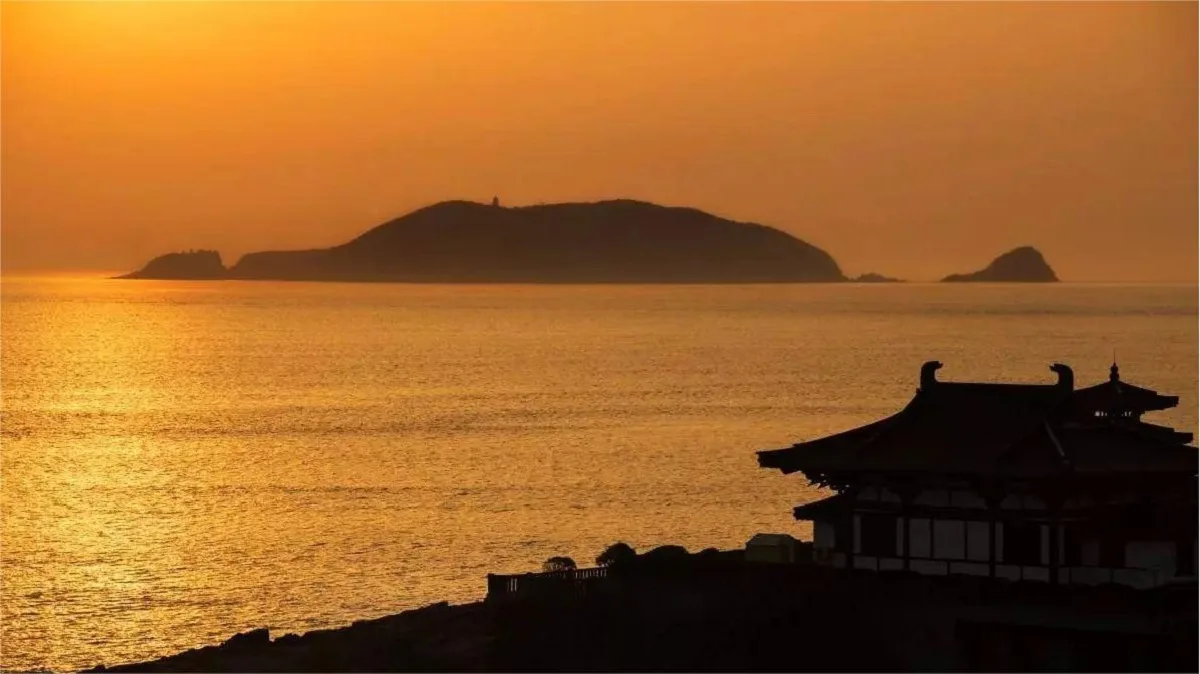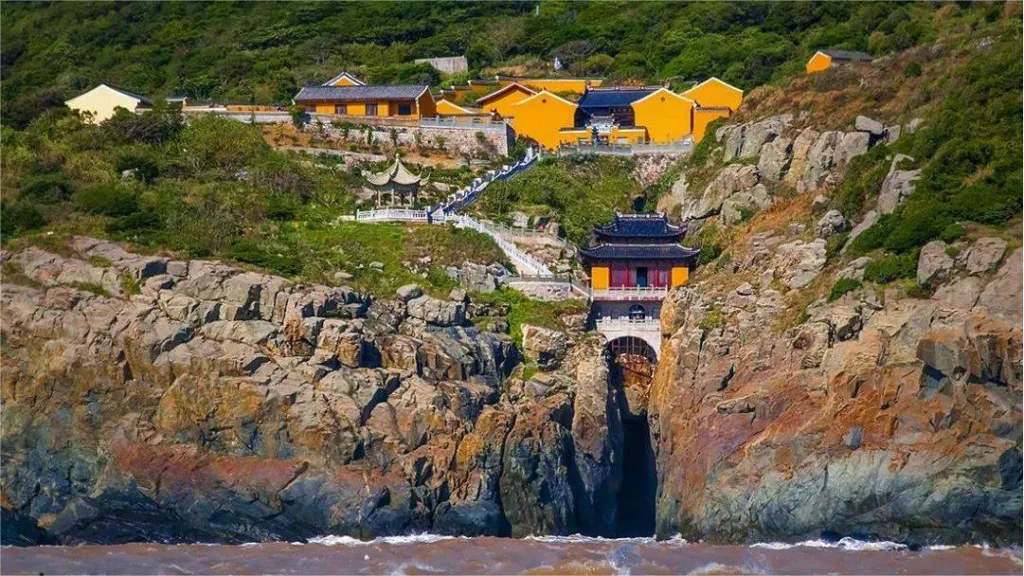Luojia Mountain (珞珈山, Luojiashan), covering an area of about 0.63 square kilometers, boasts its highest peak at an elevation of 97.1 meters. The mountain features a rugged coastline adorned with variously shaped rocks, resembling a plethora of colorful corals surrounding a fairyland. It is an integral part of the sacred Buddhist site of Mount Putuo and is traditionally considered the place where Guanyin Bodhisattva practiced and attained enlightenment. It is said that pilgrims visiting Mount Putuo must also visit Luojia Mountain, as the saying goes, “A pilgrimage to Mount Putuo is not complete without visiting Luojia Mountain.” On the mountain, there are several notable temples and structures including Yuantong Nunnery, the Hall of Great Compassion, the Hall of Great Awakening, the Hall of Kalan, the Five Hundred Arhats Pagoda, the Forty-Eight Vows Pagoda, and the Crystal Palace.
From a distance, Luojia Mountain resembles a serene Guanyin Bodhisattva lying on the Lotus Sea, with its head, neck, chest, abdomen, and feet distinctly visible. This unique formation has earned it the nicknames “Sleeping Guanyin” and “The Great Reclining Buddha of the Sea.” Historically, there were four hermitages on the mountain: Miaozhan, Yuantong, Zizai, and Guanjue, though only Yuantong Nunnery remains today. It has been expanded into Yuantong Zen Monastery, with new additions including the Hall of Great Compassion, the Hall of Great Awakening, the Earth God Shrine, the Wensi Pavilion, and the Hall of Kalan. The mountain is managed by nuns. In 1988, the Five Hundred Arhats Pagoda (also known as Miaozhan Pagoda) was constructed on the former site of Miaozhan Hermitage. The three-story, 27.6-meter-high pagoda houses 518 Arhat statues, forming twelve scenes of Arhats paying homage to Guanyin. The area around Yuantong Zen Monastery is lush and serene, with abundant incense offerings.
Other notable sites on the mountain include the ancient Longquan Well, the Immortal Bridge, the Crystal Palace, and the Yuanyue Pagoda, which houses the ashes of prominent monks from Mount Putuo. In the past, the northeastern hill featured a signal light platform known as the Tian Deng Tai, which was used to guide ships at night. This “Luojia Beacon” became one of Mount Putuo’s scenic highlights. Today, the signal light platform has been replaced by an international lighthouse, which is recorded in international maritime charts.
Basic Information
| Estimated Length of Tour | 1 hour |
| Ticket Price | Admission + Ferry: 70 RMB |
| Opening Hours | 7.30 – 13.00 |
| Telephone Number | 0086-0580-6698520 |
Location and Transportation
Luojia Mountain is located approximately 5.3 kilometers southeast of Mount Putuo in Zhoushan, Zhejiang Province. Visitors can reach Luojia Mountain by taking a boat from Duangu Wharf on Mount Putuo. The boat ride across the Lotus Sea takes about 30 minutes. The boat schedule from Mount Putuo to Luojia Mountain is as follows: 08:00, 09:00, 12:00, and 13:00. The return schedule from Luojia Mountain to Mount Putuo is 10:00, 11:00, 14:00, and 15:00.







